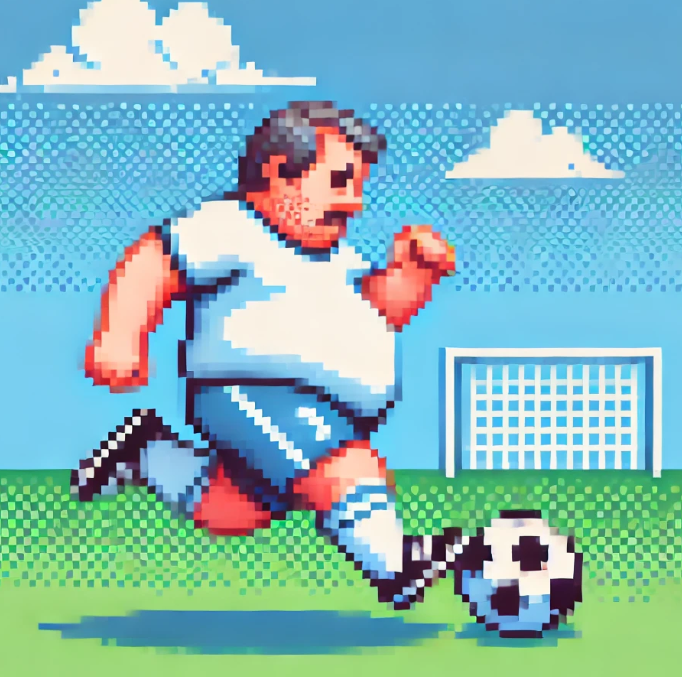
Getting Off the Couch.
Applications
- For Coaches: Use motivational strategies to empower players. Encourage them to set their own goals and experiment with new techniques, reinforcing autonomy and competence.
- For Player Development: Incorporate self-monitoring tools, like fitness trackers, to help athletes see their progress. This reinforces their sense of achievement.
- For Club Management: Build community engagement by offering programs like EuroFIT. Use your club’s facilities to host health or skills initiatives that strengthen fan loyalty while promoting well-being.
Imagine a group of middle-aged soccer fans, united not on the field but in their journey to better health. These fans, once united by their love for the game, found themselves tackling an entirely different challenge—improving their lifestyle. Through a groundbreaking program called EuroFIT, they learned to transform small steps into major victories, using the power of soccer culture to fuel their motivation.
But what made EuroFIT a game-changer wasn’t just the connection to soccer; it was the science behind the program. Built on Self-Determination Theory (SDT), the program emphasized autonomy, competence, and relatedness—three psychological pillars that help people stick to positive habits. This blog dives into the lessons from EuroFIT and how they could reshape the future of coaching, player development, and beyond.
Turning Soccer Passion Into Health Progress
EuroFIT in a Nutshell
EuroFIT, short for European Fans in Training, brought overweight soccer fans into their favorite clubs for 12 weeks of group sessions. These meetings blended interactive discussions and physical activities tailored to each participant’s level, with the SitFIT device and MatchFIT app helping participants track their progress.
What made EuroFIT unique was its focus on the psychological experience of participants. By fostering a supportive group environment and connecting health goals to personal values, the program became more than just a fitness initiative—it became a community.
The Science of Motivation: Why EuroFIT Worked
1. Building Autonomy: A Coach, Not a Boss. One key to EuroFIT’s success was giving participants control over their journey. Coaches encouraged participants to set their own goals—like taking an extra 1,000 steps daily or replacing sugary snacks with healthier options. Instead of imposing rigid rules, coaches acted as guides, providing choices and rationale for strategies.
This freedom made participants feel in charge, helping them stick to their goals. For example, a participant might have opted to walk during lunch breaks because it fit seamlessly into their day.
2. Mastering Competence: Small Wins, Big Confidence. The program’s “small steps” approach turned daunting lifestyle changes into manageable milestones. By focusing on progress rather than perfection, participants gained confidence. Tools like the SitFIT helped by showing incremental improvements, whether it was walking a bit farther or sitting a bit less.
Participants often described these moments as “cracking the code”—realizing that small, consistent actions could create meaningful change.
3. Fostering Relatedness: The Power of Team Spirit. What truly set EuroFIT apart was its use of soccer’s communal spirit. Sessions took place in familiar club settings, fostering a sense of belonging. Participants shared their struggles and successes, creating a team-like camaraderie that inspired mutual accountability.
For many, seeing other fans on the same journey helped them feel less isolated. As one participant put it, “It’s easier to tackle challenges when you know others are rooting for you.”
Lessons for Coaches and Clubs
The EuroFIT program offers practical insights that extend beyond health programs. Here’s how coaches and clubs can apply these principles:
- Make It Personal: Tailor activities to individual needs and abilities. Just as EuroFIT participants chose their own goals, soccer players can benefit from customized training plans that build on their strengths.
- Celebrate Small Wins: Highlight progress in practice, like perfecting a dribble move or improving stamina. Recognizing these milestones boosts players’ confidence.
- Create a Team Culture: Foster connection among team members by emphasizing shared goals. Whether through group discussions or team-building exercises, strong relationships drive motivation.
EuroFIT shows how the principles that make soccer exciting—teamwork, strategy, and passion—can also drive meaningful health changes. By embracing autonomy, competence, and relatedness, we can inspire lasting improvements on and off the field. Soccer isn’t just a game; it’s a powerful tool for transformation.
So, whether you’re a coach, a player, or a die-hard fan, consider this: How can you use the spirit of soccer to make your next goal more achievable?
Elevate your understanding of the beautiful game with ‘This Week in Soccer’.
Subscribe now to our newsletter and be part of a community that transforms theoretical knowledge into practical mastery. Don’t miss out on the chance to access groundbreaking insights and redefine your approach to soccer. Subscribe today!



